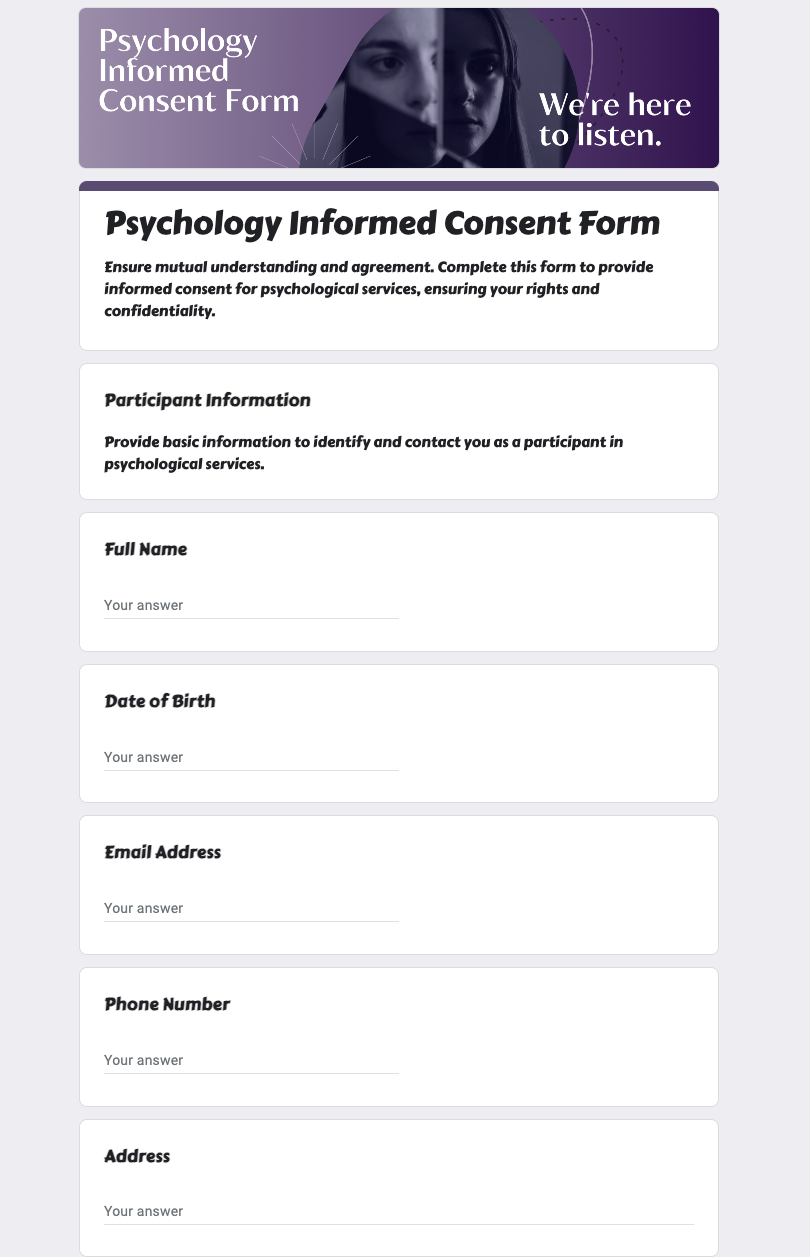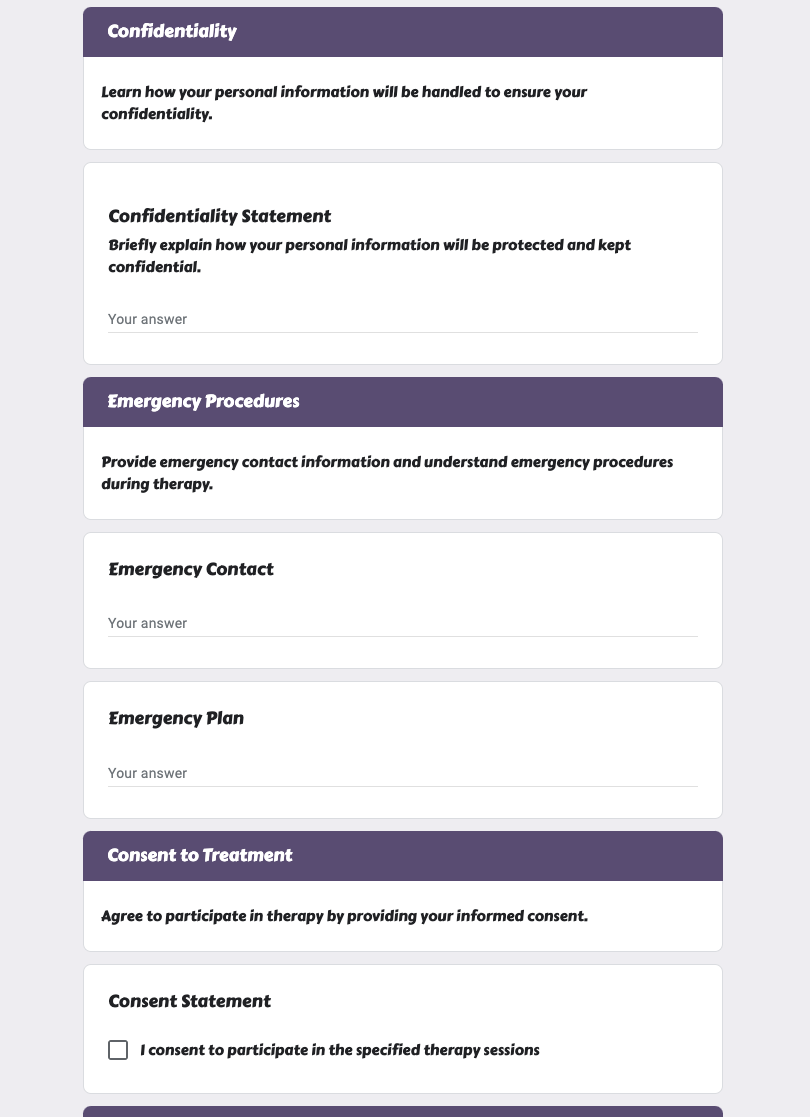Psychology Informed Consent Form
FREE
The Psychology Informed Consent Form is an essential tool for mental health professionals, including psychologists, therapists, clinical social workers, and counselors. It ensures clients understand treatment details, risks, and their rights. This form is easily customizable, allowing you to tailor it to individual needs. Securely send it to prospects and receive their responses with confidence. Enhance your practice with this high-quality, user-friendly consent form, designed to facilitate informed decision-making and foster trust between you and your clients.




